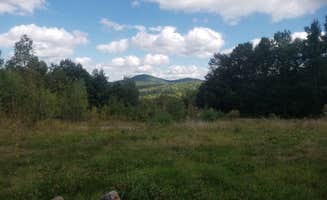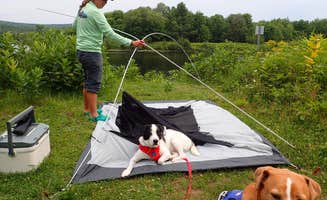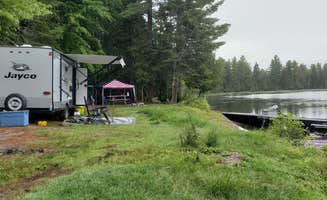Dispersed camping options near Rockwood, Maine provide remote access to the region's forests and waterways without facilities. Most primitive campsites sit on public lands at elevations between 1,000-1,500 feet with camping permitted year-round, though spring access can be limited by mud and snowmelt. Winter temperatures frequently drop below 0°F, requiring specialized cold-weather gear for winter camping.
What to do
Paddling excursions: Philbrick Landing on the Northern Forest Canoe Trail offers secluded paddling with abundant summer blueberries. "In the summer months, you will find an abundance of blueberries!" notes Sarah C., who recommends exploring the old logging road that extends from this boat-in site.
Wildlife photography: Kayaking from Lazy Tom Bog Primitive Campsite increases chances for moose photography. "Bring boats if you want to see moose. We had kayaks. We stayed here, just to be up early enough to paddle out and wait for moose to show up," advises Tina D., who spotted five moose during a two-night stay.
Hiking nearby mountains: The dispersed camping at Upper Gravel Pit provides convenient access to Little Moose Public Lands trails. "The best thing about camping here is the easy access to the great hiking in Little Moose Public Lands. Great views are found along the Little Moose Pond Trail for people looking for a decent hike but not too much elevation change," reports Nancy W.
What campers like
Remote settings: Free camping near Rockwood appeals to visitors seeking isolation. "When we were there, there was a small bench and a few stumps that were nice for seating. The campsite is at the end of an old logging road that you can walk down quite a ways," writes Sarah C. about Philbrick Landing, adding "The stars are beautiful to boot!"
River sounds: Waterside camping spots provide natural soundscapes. At Dead River Access, camper Kevin C. appreciated how "the paved area of the road ends just past the campground. Lots of people drive just past the pavement and then they turn around."
No-cost extended stays: Public land camping permits longer visits without fees. "There's no fee to camp on Seboeis Public Lands and you can stay up to 14 days," explains Jean C., though noting that free extended-stay policies mean "it can be hard to snag a drive-in, lakefront site."
What you should know
Site availability limitations: The most desirable spots fill quickly during peak seasons. "I returned on 3 consecutive weekdays and the only drive-in sites were occupied by the same campers," reports Jean C. about Seboeis Public Lands, recommending early arrival.
Rough road conditions: Access requires suitable vehicles. "The road to the pit is gravel and bumpy but you don't need a 4-wheel drive or high clearance vehicle. The short road up to the camping area is quite steep with somewhat loose rocks," explains Nancy W. about Upper Gravel Pit.
Varying campsite sizes: Sites range from small pull-offs to larger clearing areas. At Trout Brook Campground, Chris T. notes the primitive area is "Very wooded. Road is passable for most any vehicle. Not larger RV friendly but was comfortable enough to get the 27' foot trailer in."
Tips for camping with families
Bring everything needed: No services means complete self-sufficiency. "Definitely bring everything you need with you because there's nothing anywhere around," advises Sarah C. about Philbrick Landing, emphasizing the true backcountry nature of these sites.
Consider privacy needs: Some sites offer minimal separation. "There are 4 sites, 3 have no separation between them, 1 is at the entrance, all are on the access road with 0 privacy," warns Miccal M. about Trout Brook Campground, suggesting families seeking space should "tuck myself into a private alcove of trees."
Wildlife viewing opportunities: Dawn and dusk wildlife encounters create memorable experiences. At Mosquito Rips, Sarah C. describes it as "Another small site at one of the rapids on the Moose River. Depending on the water level and your skill, you can paddle the rapid or line your boat."
Tips from RVers
Size restrictions: Most primitive sites cannot accommodate larger rigs. "Basically, it is a wide-open area with two fire pits. You are permitted to collect downed wood for fires or there are numerous places to purchase bundles in town," explains Nancy W. about the Upper Gravel Pit site, which can fit small trailers.
Water access considerations: Plan for self-contained camping with no hookups. "There is one pit toilet," notes Miccal M. about Trout Brook Campground, adding that "The access road in is rough, not for normal street cars."
Limited turning space: Some sites require backing skills or advance planning. "You basically drive down a small driveway area, into an open gravel spot with a fire pit. You could bring a very small camper," advises Tina D. about Lazy Tom Bog, suggesting RVers "parked the car so it blocked the tent view if someone pulled in."







